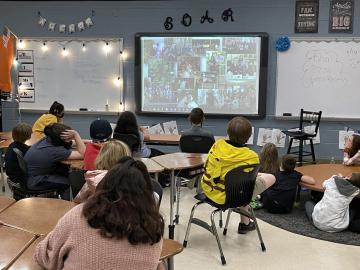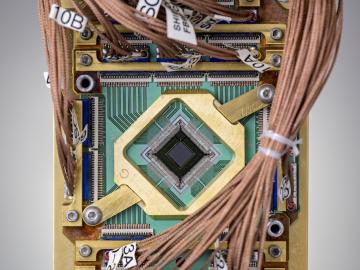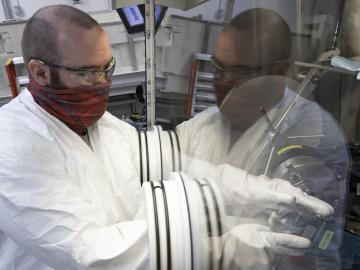
Filter News
Area of Research
- (-) Biology and Environment (67)
- (-) Isotopes (5)
- (-) Supercomputing (81)
- Advanced Manufacturing (22)
- Biological Systems (2)
- Building Technologies (1)
- Computer Science (5)
- Electricity and Smart Grid (3)
- Energy Science (194)
- Energy Sciences (1)
- Functional Materials for Energy (2)
- Fusion and Fission (11)
- Fusion Energy (3)
- Isotope Development and Production (1)
- Materials (118)
- Materials Characterization (1)
- Materials for Computing (19)
- Materials Under Extremes (1)
- National Security (30)
- Neutron Science (42)
- Nuclear Science and Technology (12)
- Quantum information Science (3)
- Sensors and Controls (1)
- Transportation Systems (1)
News Topics
- (-) 3-D Printing/Advanced Manufacturing (13)
- (-) Bioenergy (50)
- (-) Cybersecurity (9)
- (-) Energy Storage (12)
- (-) Exascale Computing (28)
- (-) Frontier (32)
- (-) Grid (7)
- (-) Materials Science (23)
- (-) Software (1)
- (-) Space Exploration (6)
- Advanced Reactors (2)
- Artificial Intelligence (41)
- Big Data (29)
- Biology (76)
- Biomedical (34)
- Biotechnology (15)
- Buildings (6)
- Chemical Sciences (15)
- Clean Water (11)
- Composites (5)
- Computer Science (105)
- Coronavirus (22)
- Critical Materials (4)
- Environment (105)
- Fusion (2)
- High-Performance Computing (56)
- Hydropower (8)
- Irradiation (1)
- Isotopes (27)
- Machine Learning (20)
- Materials (27)
- Mathematics (5)
- Mercury (7)
- Microscopy (16)
- Molten Salt (1)
- Nanotechnology (16)
- National Security (10)
- Neutron Science (16)
- Nuclear Energy (8)
- Partnerships (6)
- Physics (9)
- Polymers (4)
- Quantum Computing (20)
- Quantum Science (25)
- Security (6)
- Simulation (26)
- Summit (47)
- Transportation (8)
Media Contacts

At the Department of Energy’s Oak Ridge National Laboratory, scientists use artificial intelligence, or AI, to accelerate the discovery and development of materials for energy and information technologies.

Esther Parish is one of eight scientists from the Department of Energy's Oak Ridge National Laboratory talking to students in nine schools across East Tennessee as part of National Environmental Education Week, or EE Week.

The U.S. Department of Energy’s Innovative and Novel Computational Impact on Theory and Experiment, or INCITE, program is seeking proposals for high-impact, computationally intensive research campaigns in a broad array of science, engineering and computer science domains.

Twenty-seven ORNL researchers Zoomed into 11 middle schools across Tennessee during the annual Engineers Week in February. East Tennessee schools throughout Oak Ridge and Roane, Sevier, Blount and Loudon counties participated, with three West Tennessee schools joining in.

On Feb. 18, the world will be watching as NASA’s Perseverance rover makes its final descent into Jezero Crater on the surface of Mars. Mars 2020 is the first NASA mission that uses plutonium-238 produced at the Department of Energy’s Oak Ridge National Laboratory.

A multi-institutional team became the first to generate accurate results from materials science simulations on a quantum computer that can be verified with neutron scattering experiments and other practical techniques.

A better way of welding targets for Oak Ridge National Laboratory’s plutonium-238 production has sped up the process and improved consistency and efficiency. This advancement will ultimately benefit the lab’s goal to make enough Pu-238 – the isotope that powers NASA’s deep space missions – to yield 1.5 kilograms of plutonium oxide annually by 2026.

Six scientists at the Department of Energy’s Oak Ridge National Laboratory were named Battelle Distinguished Inventors, in recognition of obtaining 14 or more patents during their careers at the lab.

Six ORNL scientists have been elected as fellows to the American Association for the Advancement of Science, or AAAS.

The annual Director's Awards recognized four individuals and teams including awards for leadership in quantum simulation development and application on high-performance computing platforms, and revolutionary advancements in the area of microbial


